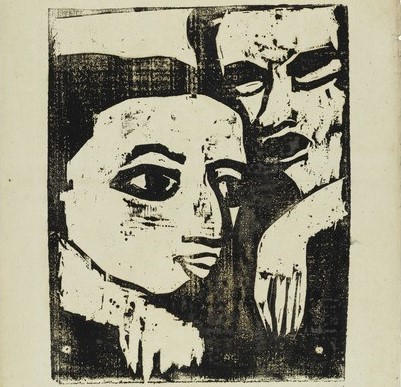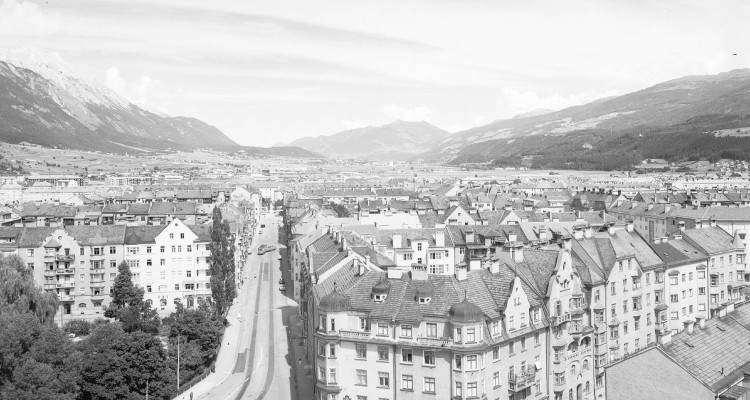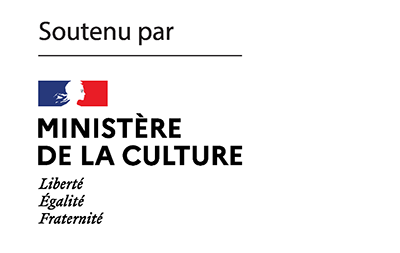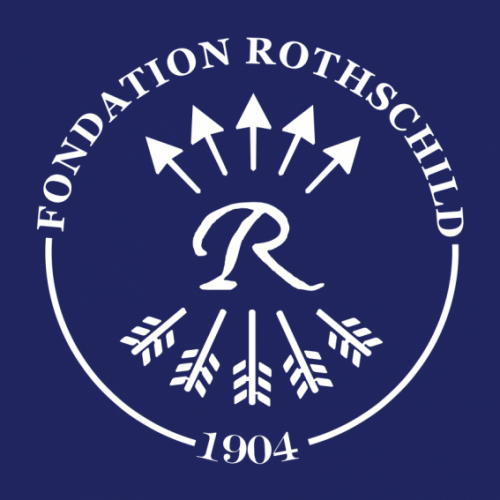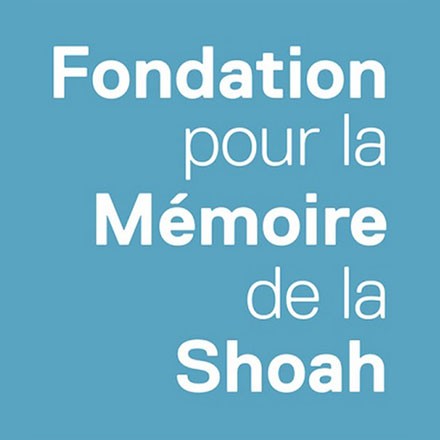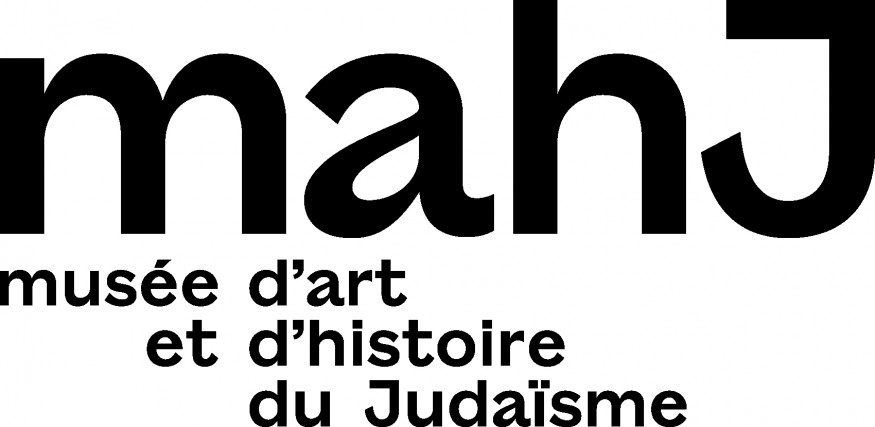
K. had lived in the big city for ages. None of his friends realized he was born in the country. He found it hard to believe himself–that he’d spent the first eighteen years of his life surrounded by fields, that he’d ridden his bicycle on little roads where distance was marked by red and white milestones. Still, he remembered with pleasure swimming in a bend of the river in summer. He remembered picking daffodils in spring. There was, however, one place in the countryside that had always made him feel uneasy, and that was the undergrowth. When he had to venture there–especially when his older brother took him to fish for tadpoles–he was torn between the excitement of searching for these little animals in the making and the inexplicable embarrassment the landscape caused him: the tangle of shrubs, ferns and ivy, the smell of moss, of mushrooms and dampness. He had long thought this feeling of discomfort came from Jacquou le Croquant, one of the first soap operas he’d seen on television as a child. He was terrified by the show’s extremely poor peasants who, fighting against their lord and oppressor, found refuge in the undergrowth, and slept there in all weather. Perhaps he was afraid of being reduced to this condition one day himself. And perhaps this was why he had lived in the big city for ages.
*
K. had been born in the French countryside, but Poland had never ceased to haunt his family since his maternal grandparents left in the 1920s to settle in Paris. His mother and his aunt called themselves “Jews of Polish origin”, which was enough to keep this country, or at least its name, in K.’s mind. Not that he could imagine it: He had never been there, and no one had ever really spoken to him about it. The family had only been to Poland three times. The first time was in the summer of 1933: The grandmother wanted to see her parents again, so she took her six-year-old daughter under her arm to Dabielnica. The grandfather probably accompanied them to the Gare de l’Est to take the Paris-Warsaw train. The only trace of this trip was a photograph in which the grandmother (who, in this photo, didn’t look like a grandmother at all; she wasn’t even thirty years old,) was surrounded by her parents–she in a wig, he in an orthodox Jewish cap, her younger brother in a Polish army suit. On the grandmother’s lap, the little six-year-old girl: Aunt Regine. From this trip, they had returned safely. Crossing Nazi Germany by train had not been difficult. The anti-Jewish laws still only concerned nationals of the Reich.
The second trip to Poland took place nine years later, in June of 1942. This time it was the grandfather who returned. The story does not say whether he paid for his ticket. No–it said, above all, that he had not chosen to make this trip. He felt no particular nostalgia for his native country. He left it before his military service. As a deserter, he lost his citizenship. He never thought he’d return. So, on the manifest of the convoy which dragged him to Auschwitz, he was marked “stateless.” He made this journey against his will, and he did not return.
Two years later, in July 1944, it was little Régine’s turn. She had, by then, become a tall, pretty seventeen year-old girl. Her journey was the same one her father had taken-the same destination. But for Régine, this second trip to Poland was not a return to her native country, since she had been born in France. Poland was not her country. She had only been there once before, at the age of six, in 1933. Her country was France. That is why, in 1945, as soon as the camp where she was dumped after Auschwitz had been liberated, she returned to Paris and settled in the apartment where she’d been born, where her parents would no longer live, for her parents no longer lived. Her father would not return; she knew that; one simply did not survive for three years in Auschwitz. And her mother had died of an illness in Paris in 1942. Régine had buried her before making the trip to Poland herself.
Then, nothing more. No more trips for sixty years. In the 1970s, when he was a child, K. remembered his father suggesting the family take a little trip to Central Europe, to visit Prague, Vienna, Budapest. . . And then he had added: “We can even go to Poland if you want. ” K.s’ mother answered: “What do you want me to do there?” What did she have to do there? What was there to see? Which uncle, which aunt, which cousin could she visit? None of them. All were dead–disappeared, in any case. Maybe some had survived in hiding, but then they had emigrated after the war, or they were still in hiding; either way, they could not be found. And besides, we didn’t know them. Why discover a family late in life? Why, but to hurt ourselves? Just to count the number of years we had missed, the childhoods unshared, the insurmountable delay?
*
Time passed. K. became an adult. One day, in the 2000s, when K. had begun a career as an art history professor, he received an invitation to a symposium organized by the Museum of Modern Art in Lodz. K. accepted immediately, with one condition: the cab that would be waiting for him at the Warsaw airport would have to make a short detour to his family’s home town, Dabielnica. It was almost on the road between Warsaw and Lodz. The detour would not be too inconvenient.
K.’s first instinct was to consult the railroad guide. The family had always traveled by train to Poland. Unlike in the 1940s, the railroads now offered other options besides cattle trains. It was even possible to book a sleeping car! But, ultimately, K. opted for the plane. And when he looked out of the window of the plane and saw the word “Warszawa” written on the main building of the airport, he felt a strong sense of unreality. This feeling grew even stronger a few hours later, when, looking through the cab’s windshield, he saw Dabielnica. It was dizzying: He felt, quite literally, dizzy. So this place, the word in his family’s mouths since he was born, its name like a watershed within the family between those who had grown up there and left–rare and on the verge of extinction–and those who only knew the sounds of the name–Dabielnica pronounced in Yiddish as Dabelnitsè and sometimes even Dablenitsè–so this place existed. One could get there.
The cab driver stopped him in the town’s only square–the rynek, the market square. Before leaving, K. took care to open a large book that sat in the middle of his aunt Régine’s library: the book of memories of Dabielnica, published after the war by Jewish survivors from the village. He had copied a rough map in which, in addition to the main buildings such as the town hall, the Catholic church and the marketplace, the location of the synagogue, the ritual bath and the Jewish cemetery were indicated.
With this sketched map, K. got out of the cab and started wandering around Dabielnica. He easily found the Catholic church, which did not enter because he was pretty sure that none of his family members had ever been there. But as he looked up at the bell tower and its clock, he thought that his teenage grandfather must have looked up in the same direction to see the time almost a century earlier. Walking in the market square, he thought that his great-grandmother, whom the old survivors said had “a herring factory”– he had once seen a photo of this famous factory at a distant cousin’s house: two barrels and a rope on which the fish were dried– probably came to sell her goods on the rynek. On the site of the synagogue, he found a movie theater. On closer inspection, (especially of the walled windows, which were somehow more ceremonial than those of the surrounding houses,) he realized that the building must have been a place of worship before it was turned into a movie theater. In place of the ritual bath, a vacant lot.
He continued on, crossed a bridge over a small river, and walked along the road for a few hundred meters until he came to a path that went into a wood on the left. He followed the path for another couple of hundred meters until he saw some stones with Hebrew inscriptions emerging from a carpet of leaves. K. had reached the cemetery, of which only a few graves remained. And just as he was about to focus his attention on one of the standing stones, his gaze was caught by the trees in the background: the undergrowth. His head began to spin. The trees began to move. He broke out in a sweat. These interlacing shrubs, ferns, ivy, this smell of moss, mushrooms and dampness: He recognized them at once.
Gilles Rozier
Translated by Ben Zitsman

